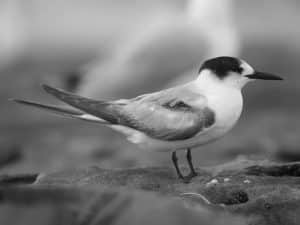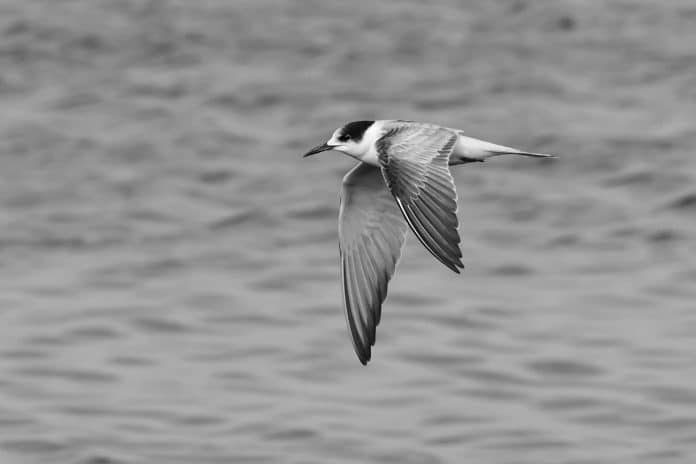Introduction to the common tern
The common tern (Sterna hirundo) is a fascinating bird species that can be found along the coastal regions of Tanzania, a country located in East Africa. With its striking appearance and graceful flight, the common tern in Tanzania has captured the attention of bird enthusiasts and nature lovers alike. In this article, we will delve into the habitat, physical characteristics, behavior, migration patterns, conservation status, and ecotourism opportunities associated with the common tern in Tanzania.
Habitat and distribution of the common tern in Tanzania

The common tern is known for its preference of coastal habitats, making Tanzania’s diverse coastline an ideal location for these charming birds. From the sandy beaches of Zanzibar to the rocky shores of Dar es Salaam, the common tern can be spotted throughout the country’s coastal regions. These birds are particularly fond of nesting on remote islands and sandbars where they can find shelter and protection from predators.
In terms of distribution, the common tern can be found in various parts of Tanzania’s coastline, including the mainland and the surrounding archipelagos. They are known to breed and raise their young in these areas during the summer months, before embarking on their long migration journey to warmer climates during the winter.
Physical characteristics and behavior of the common tern
The common tern is a medium-sized bird, measuring around 13 to 15 inches in length with a wingspan of approximately 30 inches. They have a slender body with a white underbelly and a light gray back. One of their most distinguishing features is their sharp, pointed beak, which is perfectly adapted for catching fish, their primary source of food.
These birds are highly agile and skilled fliers, often seen gracefully gliding above the water as they search for their next meal. They are also known for their impressive diving abilities, plunging into the water from great heights to catch fish with precision.
During the breeding season, common terns form colonies and exhibit territorial behavior to protect their nests. They are known to be vocal birds, with a variety of calls and alarm sounds to communicate with their flock mates. Their courtship displays are a sight to behold, involving aerial acrobatics and the presentation of small fish as gifts to potential mates.
Migration patterns of the common tern in Tanzania
The common tern is a migratory bird, embarking on long journeys between its breeding and wintering grounds. In Tanzania, these birds undertake a remarkable migration from their coastal breeding sites to warmer regions in Africa during the winter months.
Typically, the common terns in Tanzania start their migration in the late summer or early autumn. They fly thousands of miles across the Indian Ocean, navigating their way to countries such as Kenya, Mozambique, and South Africa. These birds rely on their exceptional navigation skills and the availability of food sources along their migratory route.
Upon reaching their wintering grounds, the common terns spend several months in these areas, enjoying the milder climate and abundant food resources. Once spring arrives, they begin their return journey to Tanzania, completing the impressive cycle of migration.
Conservation status and threats to the common tern population

The conservation status of the common tern in Tanzania is currently classified as “Least Concern” by the International Union for Conservation of Nature (IUCN). This indicates that the species is not currently facing any immediate threats of extinction.
However, it is important to note that the common tern population worldwide has been declining in recent years. The degradation of coastal habitats, pollution, disturbance to nesting sites, and overfishing are some of the factors contributing to this decline. Additionally, climate change and rising sea levels pose a long-term threat to the coastal areas that these birds rely on for breeding and foraging.
Efforts are being made by local conservation organizations and government agencies in Tanzania to monitor and protect the common tern population. These initiatives aim to raise awareness about the importance of preserving coastal habitats and implementing sustainable fishing practices to ensure the long-term survival of this charismatic species.
Ecotourism opportunities to observe the common tern in Tanzania
For birdwatchers and nature enthusiasts, Tanzania offers a unique opportunity to observe and appreciate the beauty of the common tern in its natural habitat. The country’s stunning coastline and diverse ecosystems provide a perfect setting for ecotourism activities focused on birdwatching.
There are several national parks and protected areas along the Tanzanian coast where visitors can encounter the common tern and other bird species. For instance, Saadani National Park, located in the eastern part of the country, is known for its rich birdlife and offers guided tours and boat trips for birdwatching enthusiasts.
Another popular destination for birdwatching is the Zanzibar Archipelago, which is home to a wide variety of bird species, including the common tern. Visitors can explore the island’s mangrove forests, sandy beaches, and coral reefs while observing these coastal charmers in their natural surroundings.
Tips for birdwatching and photographing the common tern
If you’re planning to embark on a birdwatching adventure to observe the common tern in Tanzania, here are a few tips to enhance your experience:
- Choose the right time: The breeding season, which typically occurs between November and February, is the best time to witness the courtship displays and nesting behavior of the common tern. During this period, the birds are more active and visible.
- Bring the necessary equipment: Make sure to pack a pair of binoculars or a spotting scope to get a closer look at the birds. A camera with a telephoto lens will also be useful for capturing stunning photographs.
- Respect their space: When observing the common tern or any other bird species, it is crucial to maintain a respectful distance and avoid disturbing their natural behavior. Do not approach nesting sites or make sudden movements that may startle the birds.
- Be patient and observant: Birds can be elusive, so it’s essential to be patient and spend some time quietly observing their movements and behavior. Look for signs such as fishing dives or territorial displays to capture unique moments.
By following these tips, you can maximize your chances of witnessing the beauty of the common tern and capturing memorable photographs of these coastal charmers.
Other bird species found in the same coastal areas as the common tern

Tanzania’s coastal regions are not only home to the common tern but also host a wide variety of other bird species. These coastal areas provide diverse habitats, attracting numerous migratory and resident bird species throughout the year.
Some of the other bird species commonly found in the same areas as the common tern include:
- African Fish Eagle: This magnificent bird of prey is known for its distinctive call and can often be seen perched on tree branches overlooking the water, ready to swoop down and catch fish.
- Sooty Gull: These large seabirds are characterized by their dark plumage and can be spotted along the rocky shores, scavenging for food.
- Greater Flamingo: With its vibrant pink plumage and long, graceful neck, the greater flamingo is a sight to behold. These birds can be found in coastal lagoons and salt pans, feeding on small invertebrates.
These are just a few examples of the diverse avian species that inhabit Tanzania’s coastal areas. Exploring these regions offers a wonderful opportunity to observe and appreciate the rich birdlife that thrives in these unique ecosystems.
Research and conservation efforts for the common tern in Tanzania
Research and conservation efforts play a vital role in understanding and protecting the common tern population in Tanzania. Scientists and conservation organizations are actively involved in studying the behavior, migration patterns, and breeding habits of these birds to gather valuable data.
By tracking the movements of individual birds using satellite tags and conducting population surveys, researchers can gain insights into the threats facing the common tern population. This information is crucial in designing effective conservation strategies and implementing measures to mitigate these threats.
In addition to research, conservation organizations are working to raise awareness about the importance of protecting coastal habitats and promoting sustainable fishing practices. They collaborate with local communities, fishermen, and government authorities to develop conservation plans that benefit both the common tern and the overall coastal ecosystem.
Conclusion: Appreciating the beauty and significance of the common tern in Tanzania
The common tern is undoubtedly a coastal charmer, captivating all who encounter it along the shores of Tanzania. These graceful birds with their impressive flight and striking appearance add vibrancy to the coastal ecosystems of East Africa.
Through ecotourism, research, and conservation efforts, we can appreciate the beauty of the common tern while working towards its long-term preservation. By protecting their habitats, raising awareness, and implementing sustainable practices, we can ensure that future generations will continue to enjoy the sight of these remarkable birds soaring above the East African shores.
So next time you find yourself in Tanzania, take a moment to appreciate the common tern and the vital role it plays in the coastal ecosystem. Whether you’re an avid birdwatcher or simply a nature lover, witnessing the charm of these coastal charmers will surely leave a lasting impression.

































